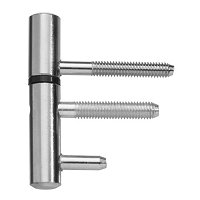Hi,
Here is another FOG thread on this too, http://festoolownersgroup.com/index.php?topic=2763.0
Seth
Here is another FOG thread on this too, http://festoolownersgroup.com/index.php?topic=2763.0
Seth
robtonya said:I could see a contractor using a couple of these to put on his/her tailgate of their pickup truck to hold an object too.
monte said:The vak system for basic suppor bar,2 vac cups and pump, with foot pedal sell for $ 3300.00
The vac system cart complete sells for $ 4400.00
monte said:so after reading about the Vakuusyst post (http://www.barth-maschinenbau.de/Produkte/Vakuusyst/video.php)
johne said:Michael
is this what you mean?

it's a drill in hinge. In dutch it is called "inboor paumelle"
johne said:
This is for doors that overlap the door frame. I hope the drawing makes that clear. You can see the shape of the door in the vid

johne said:Michael,
This is the idea

One hole in the door to hold top part of hinge
2 holes in the doorframe, for the lower part of the hinge,one for the smooth stabilizing pin and one for the threaded pin
The threaded pin has a screw accesible from the front (see pic)
Dave Rudy said:How about the edgebander? Any ideas on who makes it and (I Shudder to ask) is it AINA?
Michael Kellough said:johne said:Michael,
This is the idea
One hole in the door to hold top part of hinge
2 holes in the doorframe, for the lower part of the hinge,one for the smooth stabilizing pin and one for the threaded pin
The threaded pin has a screw accesible from the front (see pic)
Thanks for the picture, it's even clearer now. I somehow failed to notice your indication that the door jamb screw was installed through the barrel of the hinge. It's really clever, but I'm starting to see some of the drawbacks you might not like. There is a large gap (the thickness of the hinge) the full length of the door when it's closed?.
johne said:No there is hardly any gap, if there is just tighten the screw on the lower part of the hinge to reduce it. I just dont like the look of a door overlapping a doorframe . I like a door with the traditional hinges better.
